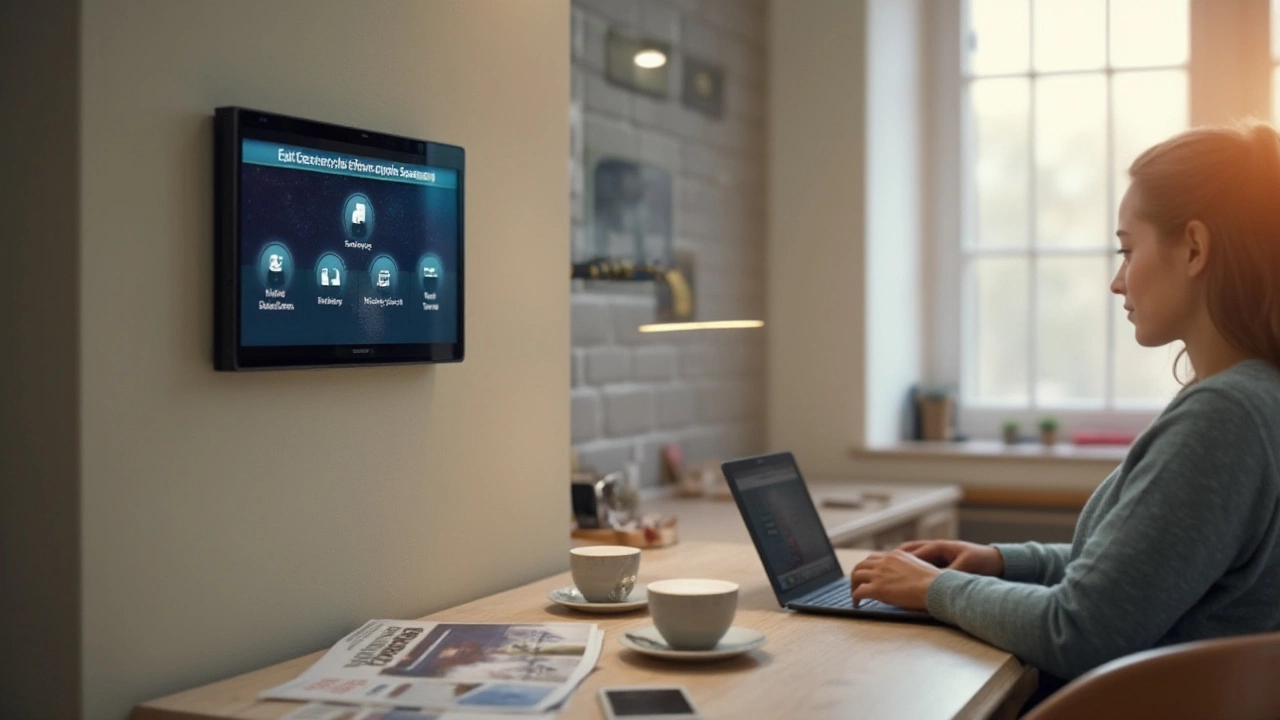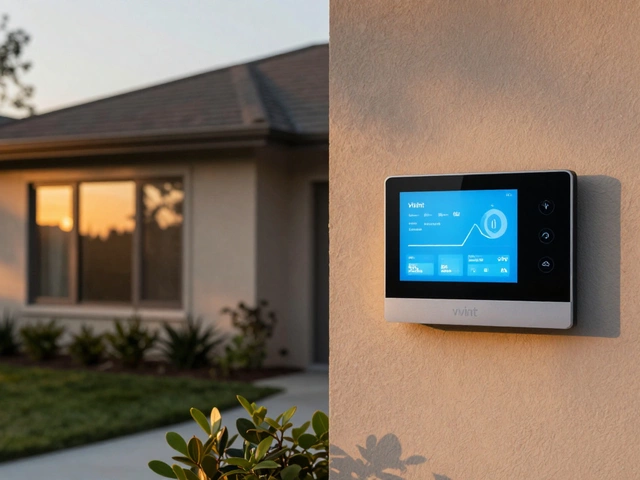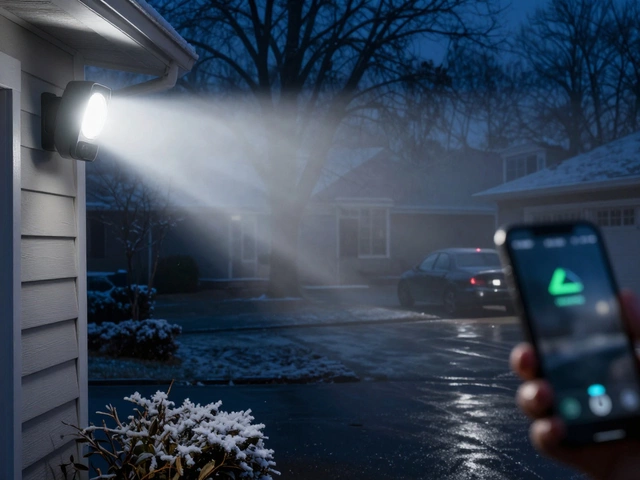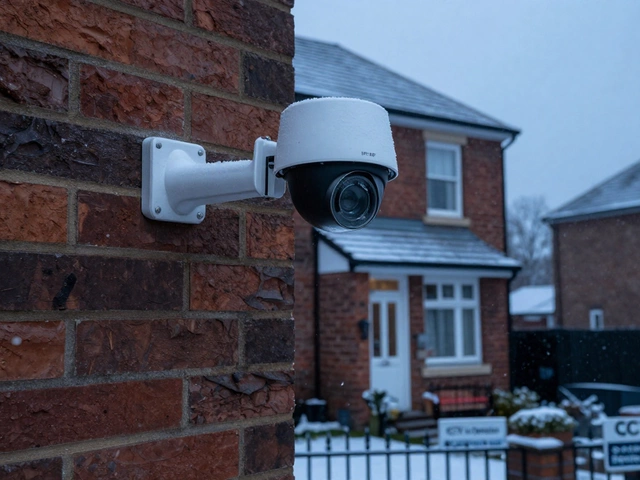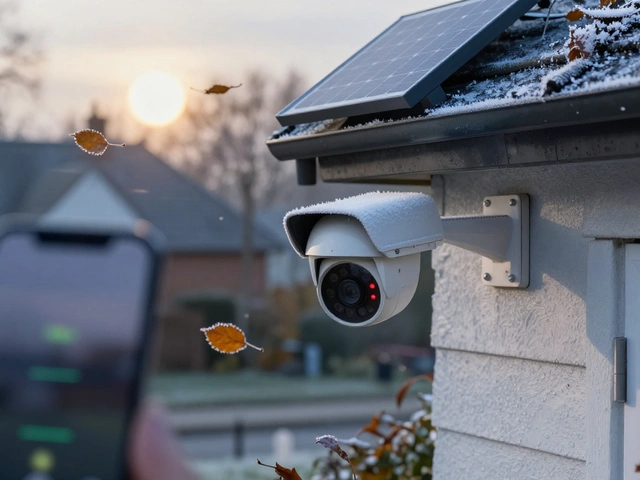When it comes to securing your home, everyone wants the best. With the rise of smart home technology, many homeowners turn to popular security providers like ADT. But in a state of increasing reliance on the internet, a question arises: Can you use ADT security systems without WiFi?
Whether you're dealing with spotty internet service or you're simply curious about how diverse ADT's offerings are, it's worth understanding the intricacies of their system. You'll find there's more than one way to guard your home, with or without WiFi.
We'll dive into the basics of ADT's technology, clarify the role of WiFi, and guide you on how to secure your fortress regardless of your internet situation. By the end of this article, you'll have actionable insights to keep you and your loved ones safe, online or off.
- The Basics of ADT Security Systems
- Role of WiFi in Modern Security
- ADT's Non-WiFi Options
- Benefits of a WiFi-Connected System
- Considerations for No-WiFi Zones
- Tips for Enhancing Security Without WiFi
The Basics of ADT Security Systems
For over a century, ADT has been a trusted name in the realm of home security. When you're contemplating the safety of your abode, understanding the essentials of what ADT offers can give you peace of mind. At its core, an ADT security system provides a network of interconnected devices designed to detect and report unauthorized entry, environmental threats, and even medical emergencies. This suite of devices includes motion detectors, contact sensors placed on windows and doors, smart cameras, and control panels, all working together to safeguard your home. ADT's system can be tailored to fit the unique needs of different households, as their professional installation service ensures that all components are optimally placed for effectiveness.
While high-tech in nature, the backbone of ADT security remains straight-forward: to create a barrier against intrusions and potential dangers. The control panel serves as the system's command center, receiving signals from sensors and detectors to notify users and, if necessary, alert emergency response teams. The integration capabilities of an ADT setup mean that it can be customized with add-ons like environmental sensors for smoke or carbon monoxide, and water leak detectors that help prevent damage from plumbing issues. It’s important to note that including such features transforms your security system into a comprehensive safety net.
The evolution of these systems over the years has brought several enhancements, especially with the advent of smart technology. Today's ADT solutions often include mobile app integration, allowing homeowners to manage their security remotely via smartphones. This convenience extends to video surveillance, offering live feeds and recorded clips of your property. Despite many modern systems relying on WiFi, ADT maintains a level of adaptability, with options that leverage cellular technology to ensure services are operable in the absence of internet connectivity.
Exploring customer reviews and expert opinions reveals the vast network and historical reliability of ADT, leading them to be seen as a dependable choice. As one security expert noted in an interview published by Forbes, "ADT offers a robust system, backed by legacy technology and constant innovation, making it a smart choice for those serious about home protection." By choosing ADT, you invest in a system with decades of proven effectiveness and a future-friendly approach that evolves with technological advancements.
One of the key selling points of ADT lies in its professional monitoring services. Available around the clock, their monitoring centers are staffed with trained professionals ready to respond to alerts, verify incidents, and dispatch emergency services if necessary. This human element complements the technological aspects of the system, providing users with an added layer of reassurance. Whether you're at home or away, the comfort of knowing that someone is there to monitor your security is invaluable.
For those evaluating smart home options, ADT's compatibility with various smart devices is another enticing feature. Many ADT systems work seamlessly with voice-controlled platforms like Amazon Alexa and Google Assistant. This means you could use voice commands for convenience features, such as arming your systems or checking the status of your home security. With such flexibility and adaptability built into its core, ADT remains a stalwart in the field of home security systems.
Role of WiFi in Modern Security
In today’s world, WiFi plays a significant role in how we monitor and secure our homes. The use of WiFi in home security solutions like ADT has become almost second nature, with many new systems leveraging the power of the internet to connect, alert, and protect. This connectivity allows security systems to access real-time data, send instant alerts to your phone, and even stream live camera feeds directly to your device. The integration of WiFi offers myriad possibilities for customization and control, letting homeowners manage every aspect of their security at the tap of a finger. For instance, you can arm or disarm your system remotely, giving you peace of mind when you are miles away from home.
The reliance on WiFi brings several benefits, but it also highlights vulnerabilities. On one hand, the integration of wireless technology means fewer wires, which makes for an easier installation process and the flexibility to place sensors or cameras almost anywhere within range. On the other hand, it exposes the system to potential cyber threats. Security safeguards like encryption and two-factor authentication have been put in place to mitigate such risks. According to a recent report by Statista, the global smart home security market is expected to reach a value of over $55 billion by 2025, underscoring the growing demand for connected security solutions. However, it is always crucial to remember that a reliable network and a robust cybersecurity strategy go hand-in-hand to ensure your protection is uncompromised.
Many users find comfort in the intuitive nature of WiFi-based systems. They can set schedules, receive alerts of suspicious activity, and even review security logs right from their phones. For example, the ability to create smartphone alerts if an unexpected person enters your home is invaluable. This kind of functionality ties in perfectly with today's diverse lifestyle. You no longer have to rush home if there’s an alert; you can check in virtually and decide whether to take action or not. Despite these conveniences, it’s essential to remember that a strong WiFi signal is necessary to maintain connection consistency. Simply put, a reliable connection equals effective security.
"The explosion of connected devices in our homes has, in many ways, made us safer, but it also means we need to be more vigilant than ever about protecting our privacy," says cybersecurity expert Bruce Schneier.
It's also interesting to see how companies like ADT have adapted to the digital age's unique needs. They provide options that allow systems to work even if internet service falters, ensuring that homes are not left vulnerable. For those living in areas where connectivity might be an issue, these systems often include cellular backup to fill that gap. This option is a testament to how important it is to balance connectivity with reliability, ensuring comprehensive coverage despite potential limitations in infrastructure.

ADT's Non-WiFi Options
When internet connectivity is less than reliable or nonexistent, it might come as a relief to know that ADT security systems have built-in adaptability. While many modern systems thrive on high-speed internet connections, ADT has always valued versatility. It's a legacy that stretches back decades to when home security wasn't dependent on WiFi. Today, ADT offers solutions that cater to environments where internet isn't a given, offering peace of mind woven with technological ingenuity.
One option ADT provides is the Cellular Security System. Unlike systems that rely heavily on broadband, cellular systems operate through the same networks that facilitate your cell phone coverage. This means no WiFi is required, and security alerts can still be sent to your smartphone or a monitoring center via cellular signals. This ensures continuous monitoring and quick response times, even in areas with unstable internet. For households located in remote regions, this can be a game-changer. The cellular system continues to function during internet outages, ensuring that protection isn't compromised. There's also the added advantage of not needing to reconfigure a WiFi setup if you change internet providers or move to a new home.
Another intriguing option involves the use of landline connections. While digital may be king today, landlines have not lost their value in the world of security. ADT systems that use landlines are less susceptible to some types of hacking that can target WiFi systems, providing a more traditional, yet still effective, layer of security. These systems continue to operate during internet blackouts, as they are wired directly to phone lines that transmit signals to ADT's monitoring centers. This blend of old-school methodology with advanced security tech offers reliability that many find invaluable, especially in areas prone to power outages.
An emerging option is the hybrid security systems that incorporate both cellular and landline technologies. These systems provide a robust level of security by leveraging the strengths of both disciplines. The coexistence of these technologies serves as a double-edged sword, ready to tackle connectivity challenges whenever they arise. With such a setup, disruption takes a back seat, as systems seamlessly switch between cellular and landline operations, ensuring that your home stays protected at all times.
ADT’s spokesperson, during a recent technology summit, noted, "Our priority is safety without compromise. By providing non-WiFi options, we ensure our security solutions are accessible to every homeowner, irrespective of their internet situation."
These innovations highlight a strategic approach by ADT to keep homes secure while mitigating the risks associated with an over-reliance on internet connectivity. By diversifying their product line, they cater to a wide array of needs—whether technological advancements reach your doorstep or not.
Benefits of a WiFi-Connected System
When you think about a modern home security system, it's easy to imagine a complex web of gadgets all working together seamlessly over a WiFi connection. The integration of WiFi into these systems offers numerous advantages, not just in terms of convenience but also when it comes to enhancing the overall security of your home. One of the primary benefits of WiFi connectivity is the ability for real-time alerts and monitoring. With a WiFi-backed ADT system, homeowners receive instant notifications of any incident directly to their smartphones or computers, no matter their location. This immediate awareness means you can act quickly in the case of an emergency, potentially preventing damage or loss.
Apart from the real-time alert feature, WiFi connection allows you to monitor your home from virtually anywhere. This feature comes in handy not just for those on vacation but also for everyday scenarios, like checking if the kids arrived safely home from school. Many systems leverage WiFi to offer high-definition camera footage, which can be accessed at a moment's notice. The clarity and accessibility of this footage can be critical in identifying intruders or confirming false alarms.
Energy and Resource Efficiency
Another key advantage involves energy management. Some WiFi-enabled ADT systems are equipped with smart home features, allowing users to manage energy consumption better by controlling lights and thermostats remotely. Imagine the savings when you're able to turn off systems that were accidentally left on, or better yet, simulate occupancy to deter potential intruders when you're not home. WiFi also facilitates seamless integration with other smart devices, providing a comprehensive smart home ecosystem that isn't just safer, but also energy efficient. And we shouldn't overlook the advantage of regular updates that WiFi enables; keeping your system up-to-date with the latest software improvements ensures it's functioning at its best.A security expert once said, "The internet of things is not just a concept; it's a reality that can redefine how secure our homes can be." With WiFi integration, ADT systems harness the internet of things to generate a network of protective layers, greatly enhancing the resilience of your home security.
Scalability and customization further highlight the benefits of a WiFi-connected system. As a homeowner, your security needs may change over time, and with WiFi, expanding your security system is as simple as adding new devices. This flexibility often means equipment from various manufacturers can be compatible, allowing you to customize your setup in a way that meets your unique requirements. Whether it's adding more cameras, integrating with your smart lock mechanism, or setting up specialized motion detectors, WiFi makes such transformations relatively straightforward.
Statistical Impact of WiFi-Backed Systems
A report by a renowned industry organization noted that homes with remotely monitored security systems, often enabled by WiFi, are three times less likely to be burglarized than those without. This statistic doesn't just highlight the perception effectiveness of such systems, but also their real-world impact. People feel safer when they have the power of WiFi in their home security, a sentiment that's backed by the numbers.Clearly, the advantages of WiFi-connected home security systems extend well beyond just the convenience of remote access. They represent a leap forward in home protection technology, offering security, safety, and significant peace of mind for homeowners everywhere. With the continuing evolution of technology, the potential for such systems to develop new features and benefits looks promising.
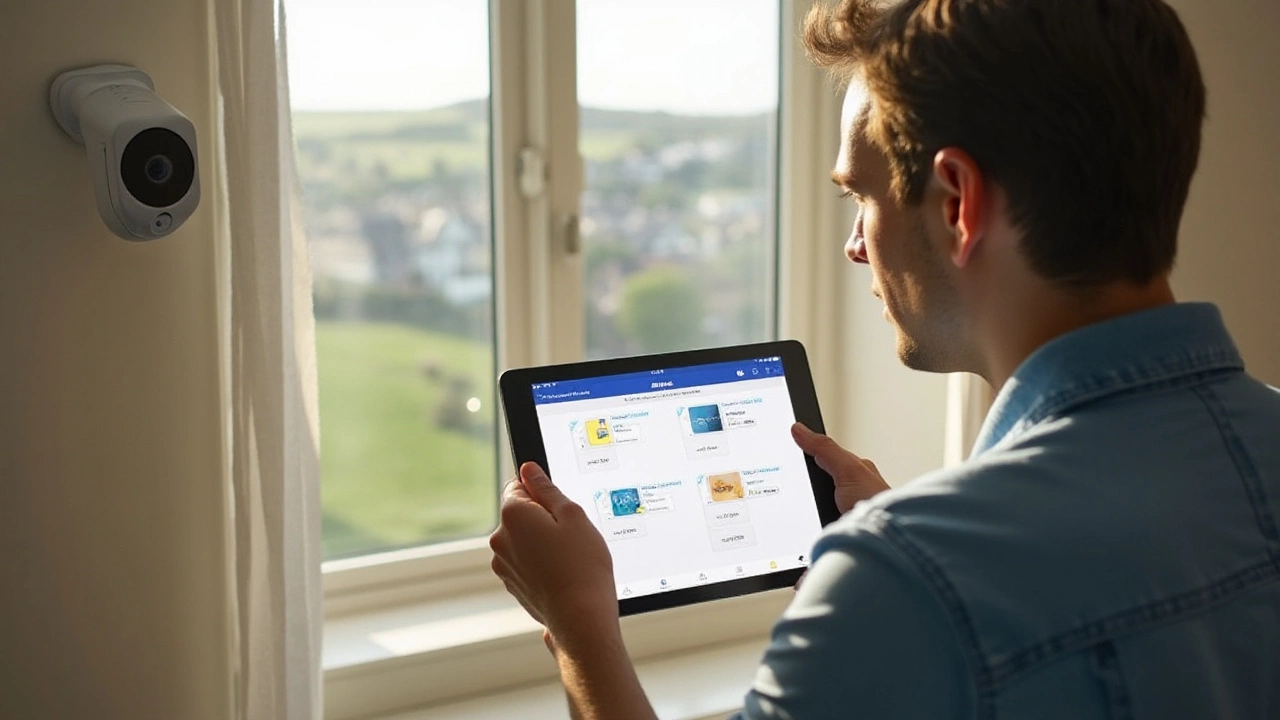
Considerations for No-WiFi Zones
In today's digital era, a stable internet connection seems as essential as electricity. But not every area is blessed with reliable WiFi, and some homeowners might find themselves in these so-called 'no-WiFi zones'. If you're thinking about setting up ADT smart home security in such an area, there's a whole new set of factors to consider. It's an intriguing challenge, not unlike figuring out how to make the best of living off the grid. ADT makes sure that their systems are flexible enough to still function effectively, ensuring that your home security isn't bound to the unpredictability of internet service.
First and foremost, ADT is renowned for providing a range of home security solutions. These include traditional landline-connected systems that operate independently of your WiFi. Such systems rely on phone lines to monitor your home and dispatch emergency services when needed. Yes, these setups may not offer the expansive suite of features that WiFi-enabled systems boast, but they do guarantee constant vigilance without a web connection. This can be particularly reassuring in areas where outages are common or internet reliability is patchy at best.
"ADT's diverse technology portfolio ensures that even customers in remote areas have access to dependable security solutions," states a report by Home Security Hub.
In the absence of WiFi, these systems utilize cellular connections as an alternative. Cellular-backed systems can still send alerts to your phone or connect to ADT's 24/7 monitoring centers, an impressive feat of engineering. It's a handy feature, best when paired with a backup power supply to ensure continuous protection, even during power outages. Employing a cellular connection isn't perfect - it may suffer from signal issues, similar to phone calls occasionally cutting out in rural locales - but it's a lifeline that ensures you remain connected when it matters most.
A useful strategy in a no-WiFi zone is scheduling regular maintenance checks with ADT technicians. This ensures your ADT security system stays in peak condition. It might seem like added hassle, but given the safety stakes, it could prove invaluable. Homeowners should also consider layering their security with traditional methods like strong locks, reinforced doors, and motion-activated lighting. After all, even the most advanced systems are enhanced when backed by solid physical security measures.
For those in particularly remote areas, the use of battery-operated cameras and sensors becomes crucial. Fortunately, ADT offers such options, allowing for areas without access to electrical outlets to still benefit from security monitoring. These batteries tend to last months on end, requiring minimal effort to maintain. It's merely a case of plugging in a new set of batteries or recharging them when needed, a small price to pay for peace of mind. Remember, when setting up a security system, always take note of your area’s unique characteristics and prepare accordingly.
To wrap it up, ADT has made sure no homeowner, regardless of connectivity challenges, feels exposed in these no-WiFi zones. By focusing on landline and cellular backup options, coupled with careful selection and maintenance of security equipment, reliable home security is feasible. Balancing the digital world with practical precautions can provide a robust safety net. The remote nature may certainly dictate some compromises, yet with informed choices and planning, your security need not be one of them.
Tips for Enhancing Security Without WiFi
So you're looking to bolster your home's security, but perhaps your internet is limited or you'd rather keep your security separate from your WiFi network. You're in luck because operating an ADT security system without WiFi is completely feasible, and there are several ways to maintain or even enhance your home's protection in this scenario.
First and foremost, you should look into a traditional landline connection for your ADT system. This tried-and-true technology has been a staple in the security world long before WiFi was even conceived. With a landline connection, your system can send alerts and notifications directly through the telephone network. Sure, it may seem a bit retro, but the reliability of a wired connection is often unmatched. Especially for homeowners who face intermittent WiFi coverage, this method can provide peace of mind knowing there's constant connectivity.
Adding an extra layer of manual security is also a wise choice. Consider low-tech solutions like motion sensor lights or traditional Locks with extra features. For example, motion-sensitive lights around entrance points can deter potential burglars before they even consider approaching your doors or windows. Similarly, enhance your security with deadbolt locks, window bars, and reinforced entryways. These tangible measures directly impede unauthorized access, no internet required.
For those truly embracing a digital-free lifestyle, animal companionship is an age-old security measure. Though not foolproof, a loyal guard dog can be both a mighty protector and constant companion. Intruders are less likely to approach homes with a fiercely barking canine alerting them. Just remember, while dogs are great deterrents, they should never be solely relied upon for home security.
Looking into additional monitoring services that don't need WiFi can also be beneficial. Some companies offer cellular monitoring options. This setup uses a cellular network for sending alerts when there is suspicious activity. Cellular networks are typically more reliable in cases of WiFi disruptions or issues such as power outages.
"Technology trusts are dead: Man is the supreme mortal and to himself the solely dependable, be friend or beast." — Paraphrased wisdom
Don’t forget, combining multiple low-tech safety measures alongside an ADT non-WiFi setup can greatly enhance your home security. And if you're willing to splurge, consider solar-powered security cameras and systems that leverage cellular networks for notifications, delivering a reliable solution come rain or shine. These small changes, together, create a strong fortress even in the absence of WiFi, ensuring that your home stays safe and secure.

